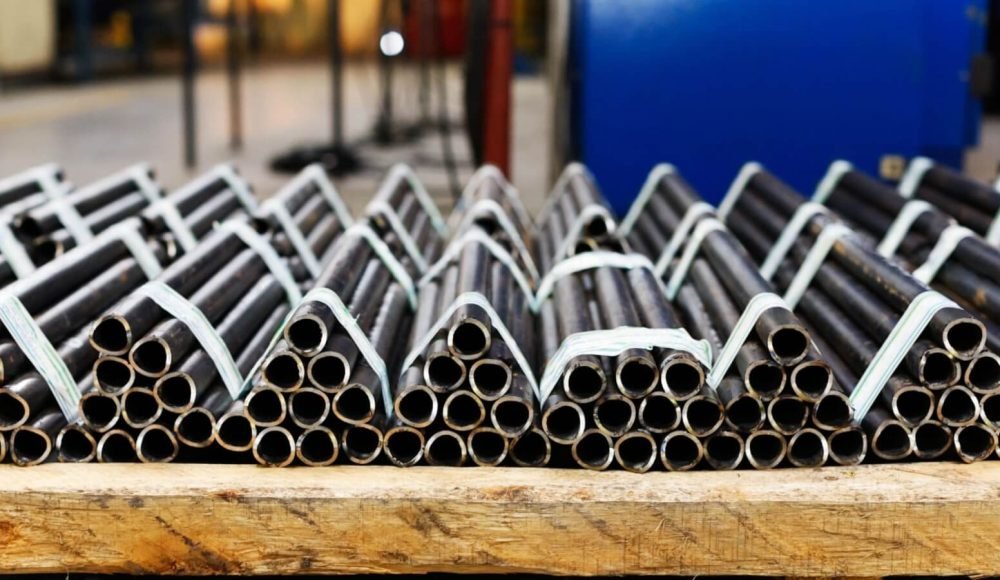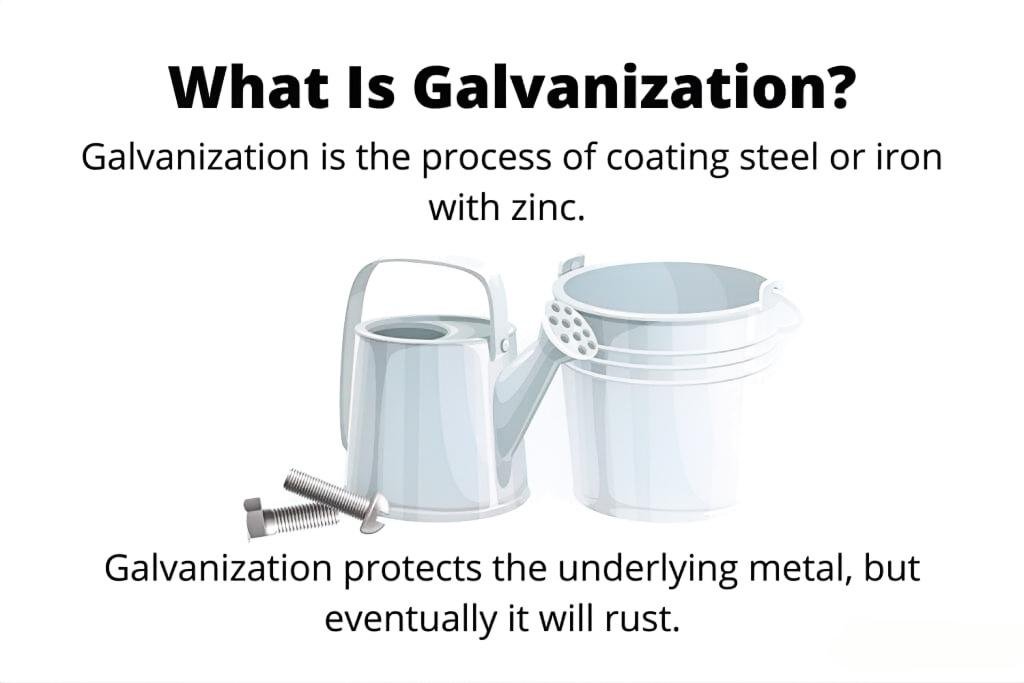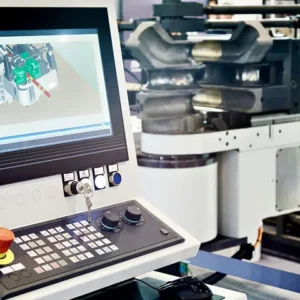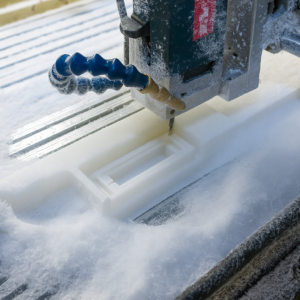تخيل عالمًا تنهار فيه جسورنا مبكرًا, سيارات الصدأ في غضون سنوات, وتسرب خطوط الأنابيب بسبب التآكل غير المقيد. الجلفنة هو البطل المجهول الذي يمنع هذا التحلل. تطبق هذه التقنية التي تم اختبارها بالوقت طبقة زنك واقية على الصلب أو الحديد, تمديد عمر الهياكل والمكونات المعدنية بشكل كبير.
اعتبارا من 2023, وقفت السوق العالمية للصلب المجلفن عند دولار أمريكي 98.80 مليار ومن المتوقع أن تصل إلى الدولار الأمريكي 166.09 مليار بواسطة 2032, ينمو في معدل نمو سنوي مركب 5.9%. بفضل الطبيعة التضحية بالزنك, الذي يتآكل بدلاً من الصلب, لا تزال الجلفنة عملية أساسية في البناء, السيارات, بنية تحتية, والصناعات التحويلية.
ما هو الجلفنة?
الجلفنة هي عملية طلاء الصلب أو الحديد مع طبقة من الزنك لحمايته من التآكل. تخدم طبقة الزنك هذه وظيفتين حرجة:
حماية الحاجز: يمنع الأكسجين, ماء, والملوثات من الاتصال بالمعادن الأساسية.
حماية الذبيحة: الزنك يتآكل بشكل تفضيلي, حماية الصلب حتى لو تم خدش الطلاء.
والنتيجة قوية, مادة طويلة الأمد مناسبة للبيئات القاسية والاستخدام الشاق.
تاريخ قصير من الجلفنة
اسم "الجلفنة" ينبع من لويجي جالفاني, عالم إيطالي في القرن الثامن عشر درس كهروضوئية. عملية الجلفان كما نعلم أنها كانت حاصلة على براءة اختراع في 1836 بقلم ستانيسلاس سوريل في فرنسا. تبعت المملكة المتحدة عن كثب, وبحلول منتصف القرن التاسع عشر, أصبحت صفائح الحديد المجلفنة واسعة الانتشار في التسقيف والبناء.
في الحقيقة, تم العثور على أمثلة على الجلفنة المبكرة في درع القرن السابع عشر, تسليط الضوء على أن المفهوم يسبق التطبيقات الصناعية. بواسطة 1850, لقد وصل استهلاك الزنك للجلفنة 10,000 طن سنويا, تعزيز أهميته في حماية المعادن.
كيف يعمل الجلفنة?
إليك كيف تسير العملية عادة:
خطوة 1: تنظيف المعدن
قبل أي شيء آخر, يجب أن يكون المعدن نظيفًا للغاية. وهذا يعني إزالة كل الشحوم, التراب, والصدأ. إذا لم تكن نظيفة, لن يلتصق الزنك بشكل صحيح.
خطوة 2: حمام الحمض (تخليل)
التالي, يحصل المعدن على غطس في حمام الحمض المعتدل. هذا يزيل أي صدأ أو مقياس بقايا ويعد السطح للطلاء.
خطوة 3: شطف وتدفق
بعد التخليل, يتم شطف المعدن ومعالجته بمواد كيميائية خاصة تسمى Flux. هذا يمنع السطح من الأكسدة (الصدأ) قبل أن يستمر طلاء الزنك.
خطوة 4: تراجع في الزنك المنصهر
الآن يأتي الجزء الرئيسي: تم غمر المعدن في حمام ساخن, الزنك المذاب - 450 درجة مئوية (850درجة فهرنهايت). عندما يحدث هذا, روابط الزنك مع الصلب, تشكيل طبقة واقية جزء من المعدن نفسه.
خطوة 5: تهدئة وتفقد
مرة واحدة المغلفة, يتم تبريد المعدن وفحصه للتأكد من أن طبقة الزنك متساوية وقوية.
العملية الكيميائية وراء الجلفنة
يعمل الجلفنة بسبب التآكل الكلفاني, حيث يعمل الزنك كأنود ويتآكل بدلاً من الصلب. عندما تتعرض للرطوبة, الزنك يشكل أكسيد الزنك وفي النهاية كربونات الزنك - سلبي, طبقة واقية تبطئ مزيد من التآكل. هذا التأثير ذاتي الشفاء مفيد بشكل خاص في البيئات الخارجية أو البحرية.
فوائد الجلفنة
1. يحارب الصدأ مثل المحترف
ال #1 وظيفة الجلفنة هي إيقاف الصدأ في مساراتها. يتصرف طلاء الزنك مثل الدروع - فهو يحافظ على الماء, الأكسجين, وأي شيء آخر يسبب التآكل. حتى لو تم خدش الطلاء, لا يزال الزنك يحمي الصلب تحتها بالتآكل أولاً. هذا ما نسميه حماية الذبيحة.
2. يستمر لعقود
المعدن المجلفن لا يدوم فقط - إنه حقًا يدوم. في معظم البيئات, يمكن أن تذهب 25 ل 50 سنوات دون الحاجة إلى إصلاحات كبيرة. في الجفاف, مناطق معتدلة, يمكن أن تستمر حتى 70+ سنين. وهذا يعني عددًا أقل من بدائل وأقل مشكلة مع مرور الوقت.
3. صديقة للميزانية
مقارنة باستخدام الفولاذ المقاوم للصدأ أو غيرها من المعادن المقاومة للصدأ, الجلفنة أرخص بكثير. تحصل على حماية كبيرة بسعر أقل. ولأنه يدوم لفترة طويلة, يمكنك توفير المال على المدى الطويل أيضًا - لا توجد طلاء مستمر أو إصلاح مطلوب.
4. صيانة منخفضة
بمجرد أن يتم مجلفنها, يمكنك أن تنسى ذلك إلى حد كبير. لا حاجة للرسم أو اللمسات العادية. إنها تقوم بعملها بهدوء في الخلفية.
5. صعبة وجاهزة لأي شيء
الطلاء المجلفن قوي. يمكنهم التعامل مع المعالجة الخشنة أثناء النقل أو البناء دون تقطيع أو تكسير. هذا يجعلها مثالية للمشاريع الخارجية, بناء هياكل, الأسوار, و اكثر.
6. تغطية كاملة, حتى على الحواف والزوايا
على عكس الطلاء, التي قد تفوت البقع الضيقة أو تبلى بسرعة, معاطف الجلفنة السطح بأكمله-بما في ذلك الزوايا التي يصعب الوصول إليها, الخيوط, والثقوب الصغيرة. هذا يعني حماية أفضل شاملة.
7. صديقة للبيئة
الصلب المجلفن هو 100% قابل لإعادة التدوير. يمكن إعادة استخدام كل من الصلب والزنك, مما يجعلها خيارًا ذكيًا للأشخاص والشركات التي تتطلع إلى تقليل النفايات وتكون أكثر استدامة.
كيف يمنع الجلفنة الصدأ
1. إنه يمنع الأشياء السيئة (حماية الحاجز)
خط الدفاع الأول بسيط: يغطي طلاء الزنك الفولاذ مثل معطف واق من المطر. يحافظ على الماء, هواء, والملح من الوصول إلى المعدن تحتها. بما أن الصدأ يحتاج إلى الأكسجين والرطوبة لتشكيل, لا يوجد اتصال لا يعني الصدأ.
2. يأخذ الضربة للصلب (حماية الأضحية)
ولكن ماذا لو تم خدش الطلاء? هذا هو المكان الذي يبدأ فيه سحر الزنك حقًا. الزنك "أكثر نشاطًا" من الصلب, وهذا يعني أنه يريد الصدأ أولا. لذا, إذا كشف الخدش المعدن العاري, ستظل الزنك المحيطة بالتآكل أولاً -لا الصلب. هذا يسمى حماية الذبيحة.
إنه نوع من الصديق الشجاع الذي يدخل لتلقي اللوم أو الضرر حتى لا تتأذى. تضحي الزنك نفسه لحماية المعدن تحتها.
3. إنه يبني طبقة إضافية بمرور الوقت
كما يتآكل الزنك ببطء, يشكل طبقة رمادية مملة تسمى كربونات الزنك. هذه الطبقة تعمل كحاجز طبيعي, إغلاق السطح أكثر وبطء الصدأ في المستقبل. لذلك كلما كبروا, كلما أصبحت محمية أكثر.
أنواع طرق الجلفنة
أ. الجلفنة بالغمس الساخن
غمر الصلب في الزنك المنصهر.
ينتج سميكة, طبقة متينة.
شائع في البنية التحتية, الجسور, والصلب الهيكلي.
الايجابيات: مقاومة عالية للتآكل, فعالة من حيث التكلفة, التصاق قوي.
سلبيات: طلاء غير متساو, خطر احتضان الهيدروجين في الفولاذ عالي القوة.
ب. قبل غالفان
مغلفة بالزنك في المطحنة قبل أن تشكل في الأشكال النهائية.
مثالي لأوراق الصلب, أنابيب, وملفات.
الايجابيات: إنتاج عالية السرعة, طلاء موحد.
سلبيات: قد يتم كشف الحواف بعد القطع أو اللحام.
ج. الكهرو-غالفانج
يتم تطبيق الزنك عبر الطلاء الكهربائي في محلول كهربائي.
الايجابيات: رفيع, سلس, الانتهاء الجمالية; جيد للهيئات التلقائية.
سلبيات: انخفاض مقاومة التآكل, ارتفاع تكلفة المعدات.
د. شيرارد (الانتشار الحراري الجلفاني)
انتشر مسحوق الزنك على أجزاء في درجة حرارة عالية (300-400 درجة مئوية).
الايجابيات: تغطية موحدة للأجزاء المعقدة; التصاق ممتاز.
سلبيات: أبطأ وأكثر تكلفة بالنسبة للأجزاء الكبيرة.
ه. Galvannealing
يجمع بين الجلفنة الساخنة مع المعالجة الحرارية.
تنتج طبقة سبيكة من الحديد الزنك مع الانتهاء.
الايجابيات: قابل للطلاء, قابل لحام, مقاوم القشر.
سلبيات: تكلفة أعلى, انخفاض بريق.
F. الطلاء الميكانيكي
جسيمات الزنك محذرة على السطح باستخدام الخرز الزجاجي.
الايجابيات: لا حرارة; آمن لسحبات عالية القوة.
سلبيات: طلاء رفيع, يقتصر على الأجزاء الصغيرة.
ز. الجلفنة المستمرة
سريع, عملية في الخط لملفات الفولاذ والأسلاك.
الايجابيات: إنتاجية عالية, سمك متسق.
سلبيات: يقتصر على أشكال مسطحة أو سلكية.
الأدوات اللازمة لجلفنة
🔧 1. حمام الزنك (حار وجاهز)
هذا خزان كبير مليء الزنك المنصهر—خين حوالي 450 درجة مئوية (850درجة فهرنهايت). إنه قلب عملية الجلفنة الساخنة. يتم غمس أجزاء الصلب في هذا الحمام لتشكيل طلاء الزنك الواقي.
فكر في الأمر مثل المقلاة العميقة للمعادن - ولكن بدلاً من الزيت, إنه مليء بالزنك المذاب.
🧴 2. دبابات التخليل
تمتلئ هذه الدبابات مع حلول الأحماض المعتدلة (مثل حمض الهيدروكلوريك أو الكبريتيك). قبل الطلاء, يحتاج الفولاذ إلى "نظيفة عميقة" لإزالة الصدأ, مقياس مطحنة, وغيرها من الأوساخ من شأنه أن يمنع الزنك من الالتصاق.
🧪 3. دبابات التدفق
بعد حمام الحمض, يذهب الصلب إلى حل التدفق- عادة كلوريد الزنك الأمونيوم. هذا يمنع الصلب من التأكسد (الصدأ) قبل أن يضرب حمام الزنك ويساعد الزنك على التمسك بشكل أفضل.
🏗 4. معدات التعامل
نظرًا لأن الأجزاء المعدنية يمكن أن تكون كبيرة وثقيلة, استخدام المصانع الرافعات العلوية, الرافعات, أو أنظمة النقل لنقلهم خلال العملية. هذا يبقي كل شيء يعمل بسلاسة - ويبقي العمال آمنين.
🌡 5. أدوات درجة الحرارة والسمك
أجهزة قياس الحرارة تأكد من أن حمام الزنك ساخن بما يكفي للربط مع الصلب.
مقاييس السمك قم بقياس مدى سمك طبقة الزنك بعد الطلاء, التأكد من تلبية معايير الجودة.
🧼 6. تنظيف العتاد
قبل أي خطوات كيميائية, يجب أن تكون الأسطح المعدنية خالية من الشحوم أو الأوساخ. وهذا يعني:
حلول التخلص من الشحوم (مثل الصابون الصناعي)
فرش السلك أو المطاحن لتنظيف البقع الصعبة
🧯 7. معدات السلامة (مهم جدا!)
يستخدم الجلفنة الحرارة والمواد الكيميائية, لذا فإن سلامة العمال هي أولوية قصوى. ستحتاج عادة:
قفازات ومآزر مقاومة للحرارة
وجه الدروع أو نظارات السلامة
أنظمة التهوية لإزالة الأبخرة
أحذية الصلب للتعامل مع الأجزاء الثقيلة
✅ 8. أدوات التفتيش النهائية
بمجرد أن يتم طلاء كل شيء وتبريده, المفتشون يتحققون من الأجزاء النهائية باستخدام:
الشيكات المرئية للقطرات أو البقع العارية
قياسات السماكة
اختبارات الالتصاق إذا لزم الأمر
المعلمات الرئيسية في الجلفنة
درجة حرارة الزنك (عادة 450 درجة مئوية)
وقت الانغماس
حالة سطح الصلب
نقاء الزنك وتكوين الحمام
تركيز التدفق
سرعة الانسحاب من حمام الزنك
معدل التبريد
الصف الصلب وسمك
الرطوبة البيئية
جودة الهواء في منطقة الإنتاج
المواد التي يمكن مجلفنها
فُولاَذ (خفيف, قوة عالية)
السبائك القائمة على الحديد
سبائك النحاس (في بعض عمليات الانتشار الحراري)
مكواة نقية
ملحوظة: يتطلب الألومنيوم والفولاذ المقاوم للصدأ عادةً علاجات وقائية مختلفة مثل الأنود أو التخميل.
التطبيقات المشتركة
بناء: عوارض, الدرج, السور
السيارات: لوحات الجسم, إطارات
زراعة: صناديق الحبوب, سياج
بنية تحتية: إضاءة الشوارع, الدرابزين
السباكة: الأنابيب المجلفنة (40-50 سنة العمر)
البحرية: المباني الساحلية, أرصفة
الأجهزة & إلكترونيات: أغلفة خارجية, لوحات
عيوب الجلفنة
⚠ 1. ليست مثالية للولادة القوية الفائقة
إذا كنت تعمل مع فولاذ عالي القوة, يمكن أن يسبب الجلفنة في بعض الأحيان مشكلة تسمى تحضرة الهيدروجين. هذه مجرد طريقة خيالية لقول أن الصلب قد يصبح هشًا وكراسيًا - خاصةً تحت الضغط. لذا, للأجزاء الصعبة أو الحرجة للغاية, قد تحتاج إلى اتخاذ احتياطات إضافية أو استخدام طريقة مختلفة.
🎯 2. قد لا يكون الطلاء حتى تمامًا
في بعض أساليب الجلفنة (مثل الساخنة), يمكن أن يخرج طلاء الزنك قليلا غير متكافئة. قد ترى بقع أكثر سمكا, يقطر, أو المناطق القاسية. بالنسبة للأجزاء التي تبدو مهمة حقًا - أو عندما تكون القياسات الدقيقة مهمة - يمكن أن تكون هذه مشكلة.
✂ 3. القطع أو اللحام? سوف تكشف المعدن العاري
بمجرد حلف الصلب, أي قطع, حفر, أو اللحام أنت بعد ذلك ستعرض الصلب الخام تحتها. لم تعد هذه المنطقة محمية من الصدأ-لذلك ستحتاج إلى العودة وتطبيق نوع من اللمس, مثل الطلاء الغني بالزنك أو الرش.
🎨 4. إنها ليست أجمل النهاية
عادة ما يكون الصلب المجلفن نظرة فضية رمادية ممل أو غير لامع. إنه ليس لامعًا أو ناعمًا مثل الفولاذ المقاوم للصدأ. إذا كنت تهتم كثيرًا بكيفية ظهور السطح, بالنسبة للتصميم الداخلي أو العناصر الزخرفية - قد لا يتطابق الفولاذ المجاني.
☁ 5. احترس من الصدأ الأبيض
يمكن أن يحصل المعدن المجلفن الطازج في بعض الأحيان على أبيض, طلاء مسحوق إذا تم تخزينه أماكن رطبة أو رطبة. هذا "الصدأ الأبيض" لا يضر عادة بالمعدن, لكنها تبدو سيئة ويمكن أن تكون علامة على التخزين غير لائق.
📏 6. قد يؤثر على الحجم أو الشكل قليلاً
لأن الزنك يضيف طبقة طلاء, يمكن تغيير الحجم الكلي أو السماكة من الجزء. هذا عادة ما يكون فرقًا صغيرًا, ولكن للأجزاء الدقيقة الفائقة, قد تعبث مع الملاءمة أو التسامح.
مدة العملية
🧼 1. تحضير (تنظيف, تخليل, التدفق): 1-3 ساعات
قبل أن يلمس المعدن الزنك, يجب تنظيفها بشكل صحيح. ويشمل ذلك:
إزالة الشحوم (إزالة الزيت والأوساخ)
تخليل (إزالة الصدأ مع الحمض)
التدفق (إضافة طلاء لمساعدة عصا الزنك)
اعتمادًا على مدى قذرة أو صدئ المعدن, هذا الجزء يمكن أن يستغرق بضع ساعات.
🛁 2. غمس الزنك: بضع ثوانٍ إلى بضع دقائق
الجزء الجلفاني الفعلي -غمس المعدن في حمام الزنك المنصهر- سريع بشكل مدهش. عادة ما يستغرق فقط بضع ثوانٍ إلى بضع دقائق, اعتمادا على حجم وسمك الجزء.
قد تحتاج الأشكال الأكثر سمكًا أو أكثر تعقيدًا إلى مزيد من الوقت للحصول على مغلفة بالكامل.
❄ 3. التبريد والإخماد: 10-30 دقيقة
بمجرد خروج المعدن من حمام الزنك, يحتاج إلى ترطيب لذلك يمكن للطلاء تصلب. في بعض الأحيان يتم تبريده في الهواء, في أوقات أخرى يتم إسقاطها في خزان مياه (التبريد).
تساعد هذه الخطوة على "قفل" الطلاء وتسريع العملية.
✅ 4. التفتيش واللمس: 10-60 دقيقة
بعد كل شيء يبرد, الأجزاء المجلفنة فحص للجودة. يبحث العمال عن البقع العارية, يقطر, أو المناطق التي تحتاج إلى لمس. هذا يمكن أن يستغرق بعض الوقت, خاصة بالنسبة للقطع الكبيرة أو المعقدة.
🕒 لذا, ما هو إجمالي الوقت?
صغير, أجزاء بسيطة: تم في بضع ساعات فقط.
أجزاء أكبر أو أكثر تفصيلا: يمكن أن يأخذ يوم كامل, اعتمادًا على سير العمل والإعداد.
خطوط إنتاج عالية الحجم (مثل الجلفنة المستمرة لملفات الصلب) يمكن تشغيل بدون توقف ومعالجة آلاف الأقدام من المواد في الساعة.
مجلفن عمر الصلب
متوسط: 25-50 سنة
بيئات معتدلة: يصل إلى 75 سنين
البحرية/الصناعية: 10- 30 سنة
تأثرت:
فئة الطلاء (على سبيل المثال, G90, G185)
بيئة (الحضرية مقابل الريف)
صيانة (المعاطف, عمليات التفتيش)
تدابير السلامة
PPE: قفازات, الوجه الدروع, ساحة
تهوية: ضروري لإزالة أبخرة الزنك
المناولة الكيميائية المناسبة
احتياطات اللحام: قم بإزالة الزنك حول المفاصل
تمرين: لجميع الموظفين
مراقبة وضوابط درجة الحرارة
عيوب شائعة
البقع العارية: من ضعف التنظيف أو التدفق
قطرات الزنك/أشواط: من سرعة الانسحاب غير السليمة
تزييف: بسبب التدفئة غير المتكافئة
الصدأ الأبيض: بسبب التخزين الرطب
الطلاء الخام أو الثقوب الدبالية: من شوائب الزنك
بقايا اللحام: يمنع الترابط المناسب
الصلب المجلفن مقابل الفولاذ المقاوم للصدأ
| ميزة | الصلب المجلفن | الفولاذ المقاوم للصدأ |
| يكلف | أدنى | أعلى |
| المقاومة للتآكل | معتدل (تعتمد على الطلاء) | عالي (حماية السبائك المتأصلة) |
| متانة | عقود في بيئات معتدلة | طويل الأمد حتى في الإعدادات القاسية |
| مظهر | غير لامع/spangled | ساطع, سلس |
| قابلية الطلاء | محدود (يتطلب الإعدادية) | ممتاز |
| التطبيقات | الهيكلية, السيارات, في الهواء الطلق | البحرية, طبي, طعام, كيميائية |
كيفية تحديد الصلب المجلفن
مرئي: نمط "spangle" يشبه البلورة
مظهر الصدأ: تآكل أبيض/رمادي (أكسيد الزنك)
اختبار المغناطيس: مغناطيسي (على عكس بعض الفولاذ المقاوم للصدأ)
سطح: تشطيب خشنة أو مرقش قليلاً
كيميائي & الخصائص الفيزيائية
المقاومة للتآكل: ممتاز للبيئات المعتدلة
مغناطيسي: يحتفظ بخصائص Steel Magnetic
المقاومة الحرارية: مستقر حتى نقطة انصهار الزنك (~ 419 درجة مئوية)
القوة الميكانيكية: قاعدة المعادن المحتفظ بها; تصلب السطح عن طريق الطلاء
خاتمة
الجلفنة هي تقنية لا غنى عنها في التصنيع والبنية التحتية الحديثة. إنه يوفر عملية, حل فعال من حيث التكلفة للتآكل مع الحفاظ على النزاهة الهيكلية لعقود. سواء كنت تقوم بتصميم ناطحات السحاب, بناء المركبات, أو تصنيع الإلكترونيات, يضمن اختيار طريقة الجلفانية الصحيحة أن منتجك يقف لاختبار الوقت.
اقرأ المزيد:





